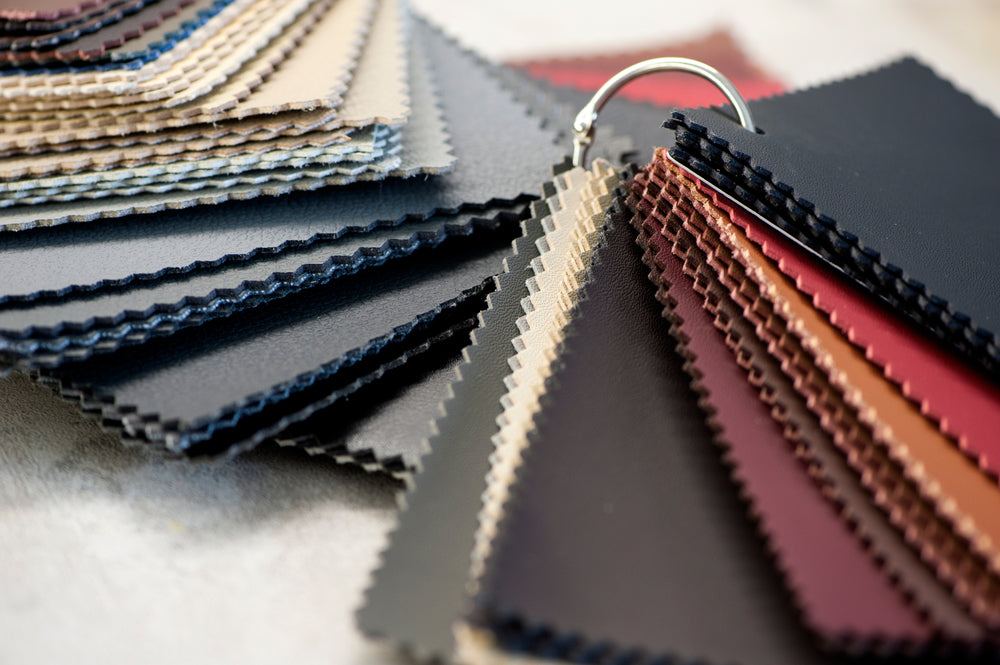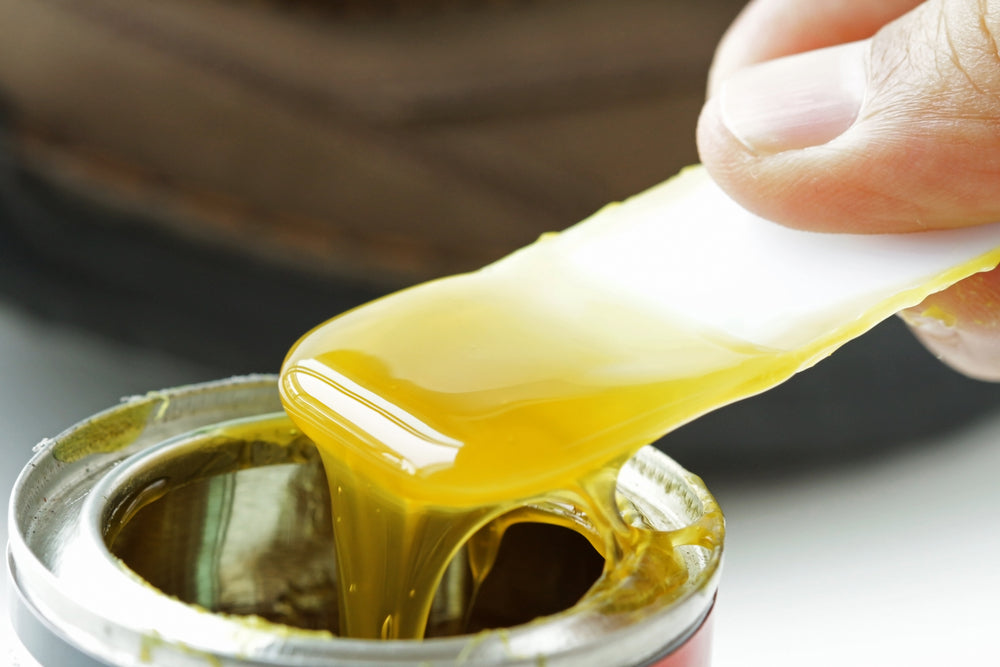
Vegan leather has exploded in popularity as a cruelty-free alternative to traditional animal hide. From handbags to vegan leather shoes, many consumers now seek out faux leather products to avoid using animal skin. But is “vegan” always synonymous with “environmentally-friendly”?
In this post, we’ll explore what vegan leather is made of, the pros and cons of different types, and whether these materials truly live up to their eco-friendly reputation. The goal is to cut through the greenwashing in fashion and help you make informed, sustainable choices.
What Is Vegan Leather, Exactly?
Vegan leather (synthetic or faux leather) is any material designed to replicate the look and feel of genuine leather without using animal products. Instead of cowhide or other animal hides, vegan leathers can be made from various sources. On the synthetic side, the most common are plastics like polyurethane (PU) and PVC, which are layered onto a fabric backing. On the innovative side, there are plant-based leather alternatives made from natural fibers and organic matter, such as cork, pineapple leaf fibers (Piñatex), cactus, apple peels, and mushroom mycelium.
Why the buzz? For many consumers, the main appeal of vegan leather is that it’s animal-friendly.
-
No animals are harmed or killed to produce it.
-
It also offers versatility: faux leathers can be produced in many colors, textures, and finishes that genuine leather might not easily achieve.
-
And often, vegan leather goods are cheaper than real leather, making ethical fashion more accessible.
In an age when people are concerned about animal welfare and the origins of their clothing, it’s no surprise that plant-based shoes and bags are on the rise.
However, not all vegan leathers are created equal. The term “vegan” means “not from animals” – it does not automatically mean “sustainable” or eco-friendly. Some vegan leather products might have significant environmental drawbacks. To understand why, let’s dive into the different types of vegan leather and their impacts.
The Plastic Problem: PU and PVC Faux Leather

The most common vegan leathers on the market are plastic-based. Polyurethane (PU) and Polyvinyl Chloride (PVC) are widely used to make faux leather fabrics. Essentially, these are sheets of plastic derived from fossil fuels (petroleum) are embossed to look like animal hide and often bonded to a fabric backing. While they succeed in looking like leather, their environmental impact can be concerning.
PVC Leather
If you’re buying faux leather, experts suggest steering clear of PVC whenever possible. The entire life cycle of PVC has a very negative environmental impact. Producing and disposing of PVC can release toxic chlorine-based chemicals, and PVC is one of the world’s primary sources of dioxins – harmful pollutants that persist in the environment. In short, PVC is not an eco-friendly material.
PU Leather
Polyurethane is considered a less harmful alternative to PVC (it doesn’t contain chlorine). Many brands have switched to PU-based vegan leather for this reason. However, PU is still a plastic made from petrochemicals. Its production involves heavy chemical use, and it is nonrenewable and non-biodegradable. In other words, PU leather is still part of the fossil fuel economy, relying on oil, and will never biodegrade into natural elements once discarded. Recycling options for PU leather are minimal as well.
Environmental Costs
The biggest issue with these synthetic leathers is that they contribute to plastic pollution. When a PU or PVC vegan leather item wears out, it usually ends up in a landfill, which can take hundreds of years to break down.
As it degrades, it often sheds tiny microplastics that can leach into waterways. These microplastics in the ocean and rivers can harm marine life and enter the food chain, causing ecological damage. In essence, a plastic “vegan” shoe or purse might spare animal lives, but if it’s not durable, it could become pollution that outlives us by centuries.
Longevity
Another drawback is durability. While there are high-quality synthetics, many plastic-based vegan leathers tend to crack or peel faster than real leather. They often don’t develop the longevity or “patina” that genuine leather can.
The greenest choice is to use a product for as long as possible. So, if a synthetic leather product isn’t built to last, its “cruelty-free” label comes with a catch: it may need to be replaced often, using more resources and creating more trash.
Plant-Based Vegan Leather: Sustainable Alternative or Hype?
With growing concern over plastic-based faux leather, new plant-based leather options are taking center stage. Materials like cactus, pineapple, apple, and mushroom leather promise an exciting shift, using natural fibers and agricultural waste instead of fossil fuels. These bio-based materials aim to reduce waste, avoid animal products, and offer biodegradable shoe materials, making them an attractive alternative for environmentally-conscious consumers.
Mushroom leather, made from mycelium, is especially promising. Luxury brands have already tested their leather-like texture, and early production methods require less water and no toxic tanning, unlike genuine leather. With no heavy metals or livestock, mushroom leather could help dramatically reshape the footwear industry.

But here’s the catch: most current plant-based leather products aren’t entirely natural. Many plant–plastic hybrids blend organic material with polyurethane (PU) binders to ensure durability and water resistance. While some innovations, like Mirum®, are truly plastic-free and sustainable alternatives, many aren’t fully biodegradable. And because these options are still emerging, large-scale production is limited, making accessibility and data on longevity a challenge.
In short, plant-based shoes are a step in the right direction, but they’re not a perfect fix, yet.
Greenwashing and Common Misconceptions
Unfortunately, the rise of vegan leather has come with some greenwashing in fashion marketing. Brands often advertise “vegan” as inherently “environmentally-friendly”, glossing over that a lot of vegan leather is just plastic. This has led to confusion among consumers.
In one survey, 74% of respondents said the term “vegan leather” was confusing, and many did not realize it often contains plastics. In other words, people might buy a “sustainable faux leather” product thinking it’s eco-friendly, when it’s made of PVC or PU.
The lack of transparency here is a big problem. Some companies use fancy names for their materials (like “eco-leather” or “PU leather”) without clearly stating that these are petroleum-based synthetics. This misinformation problem means well-intentioned shoppers could unknowingly contribute to plastic pollution while trying to make ethical choices.
Greenwashing in fashion occurs when brands overstate environmental benefits—for example, calling something “plant-based” even if the majority of it is plastic. Always check the material details: Is that new “apple leather” wallet actually mostly polyurethane with a bit of apple residue, or is it truly bio-based? If a product is advertised simply as “vegan leather,” consumers deserve to know whether it’s a natural, sustainable material or just fossil-fuel plastic in disguise.
Another misconception is about real leather vs. faux leather in terms of sustainability. Reality check: traditional leather has serious environmental issues, from the impact of livestock farming (land use, methane emissions) to the toxic chemicals in tanning (which can pollute air and water and harm tannery workers).
It’s not a straightforward “real = bad, vegan = good” situation. If hides from the meat industry aren’t used for leather, they often go to waste (an estimated 40% of hides get landfilled or incinerated globally) – wasting resources and potentially emitting greenhouse gases as they decompose. Thus, using leather as a byproduct can be considered resource-efficient if done responsibly.
On the flip side, producing new synthetic leather means more plastic production. The bottom line: both options have pros and cons, and the truly sustainable choice comes down to responsible sourcing, production, and product longevity.
Making Smarter, More Sustainable Choices
So, how do you find truly sustainable faux leather options? A few tips:
-
Avoid PVC, which has the worst environmental track record. If labels are unclear, ask questions before you make the purchase.
-
Opt for recycled or upcycled materials. Some brands repurpose plastic bottles or marine waste into leather alternatives, helping to reduce pollution.
-
Support bio-based options, but read the fine print. Many “plant-based” products still contain plastics. Choose items with high natural fiber content.
-
Buy quality over quantity. Whether it’s real or vegan leather shoes, durability and reusability matter more than labels.
-
Look for transparency. Brands that share how and where their products are made, and what they’re made from, are more likely to walk the talk.
Our Commitment to Better Materials

At COMUNITYmade, we believe that sustainability starts with transparency and craftsmanship. We’re a community of designers and makers focused on producing high-quality, responsibly made shoes right here in Los Angeles.
A great example of our approach is The Mayor, a collaborative project with Pingree Detroit. It’s an urban utility sneaker built from upcycled leather from the auto industry. Leather that would’ve ended up in landfills. Instead, we give it new life in a durable, resoleable design that blends sneaker comfort with boot-level toughness. We don’t chase trends. We carefully choose materials that reflect our values. If it isn’t built to last or doesn’t align with our principles, we don’t use it.
At COMUNITYmade, we’re proud of our people and environmentally responsible methods. We consider ourselves a community of designers and craftspeople who strive to create the highest quality, custom-made shoes. If you’re in the Los Angeles area, please visit us. We’d love to show you around.


